
In the U.S., just after the turn of the twentieth century, Billy Possum and the Teddy Bear had a contentious relationship. Think of the Teddy Bear in the role of the beloved Beatles and Billy Possum in the role of the upstart Monkees. The Teddy Bear rose to fame as a result of natural events. But Billy Possum arose from a calculated attempt to create a fad. The stuffed toy possum became part of a campaign to rob the Teddy Bear of his popularity – with the help of a presidential endorsement, artist-signed postcards, and a ruthless merchandising campaign.

WHO IS “CRITE?”
The most popular Billy Possum postcards were created by Arthur T. “Crite” Crichton (ca. 1863-1937). He was a political cartoonist and a creator of comic strips. According to the 1900 US Census, Crichton was born in Canada. He emigrated to the US in 1881. Five years later, “Crite” was working as a staff artist for King’s (Illustrated) Life in Kansas City, Missouri. During his career, Arthur Crichton created political cartoons and comic strips for many different newspapers. Unfortunately, no photograph of “Crite” could be located. Little is known about his personal life.
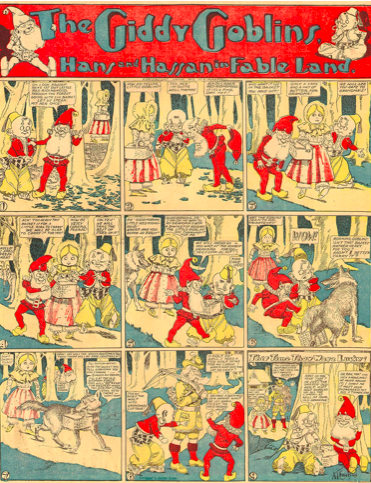

From 1886 to 1900, Crichton moved to a new city roughly every two years. During this period he worked successively as a staff artist for the Denver Republican, the Boston Post, the New York Evening Journal, the St. Louis Chronicle, and the Philadelphia Record. Perhaps his frequent moves simply resulted from contractual employment. Or perhaps not. The fate of Crichton’s first marriage suggests he may have had other issues.
CRITE ABANDONS HIS WIFE
On September 7, 1893, Arthur married Anna E. Hall in Jackson County Missouri. She sued him for divorce due to abandonment in September 1900. At about this time, Crichton created a political cartoon critical of President Theodore “Teddy” Roosevelt, “The Strenuous Life Has its Drawbacks!” Unfortunately, It’s unclear whether this cartoon represented his personal political views.
CRITE REMARRIES
In 1902, Crichton was an executive committee member of the Newspaper Artists Association. He married his second wife, Alice McFall, in Manhattan in 1904. Between 1902 and 1910, Arthur created comic strips for the St. Louis Star, the Boston Herald, and the New York Herald. His early cartoon strips were heavy on detail. Some of them were racist. During this period, Arthur Crichton also created Billy Possum postcards for the HSV Lithographic Company in New York. This act made him part of a peculiar event in American history that began with a presidential bear hunt.

TEDDY BEARS ENTER POLITICS
In 1902, President Theodore “Teddy” Roosevelt had an image problem. His love of big-game hunting led the public to see him as cruel and bloodthirsty. On November 14, 1902, Teddy went on a hunting trip but failed to shoot a bear. His guides found a sick old bear and tied it to a tree for Roosevelt to shoot. The President gallantly refused, saving the bear’s life. Two days later, Political cartoonist Cliff Berryman created a satirical cartoon of the event, replacing the scraggly old bear with a cute little bear cub. This image ironically helped to rehab the President’s image.
The cartoon inspired Brooklyn candyshop proprietor Morris Michtom to form the Ideal Toy Company. With Roosevelt’s approval, he created the first plush Teddy Bear. Cliff Berryman’s cartoon and the cute little Teddy Bear helped to rehabilitate President Roosevelt’s public image.


ROOSEVELT & TAFT: A RIVALRY CREATED
In 1904, President Roosevelt decided not to run a third time. He picked William Howard Taft, his Secretary of War, to carry on. Taft was one of Roosevelt’s closest advisors. The two men also had similar political outlooks. With Roosevelt’s support, Taft won the presidential election in 1909. The initial camaraderie between the two men becomes a rivalry manufactured by the print media and campaign masterminds.

POSSUMS, TATERS & TEDDY BEARS
William “Bill” Taft and his family went to Georgia for the holidays to celebrate his election. In January 1909 Taft worked with Asa Candler, president of the Atlanta Chamber of Commerce to plan a big banquet. On January 15, 1909, the President-elect and his guests dined on an eighteen-pound roast opossum accompanied by sweet potatoes and persimmon beer. Possum was a popular dish in the American south during the Victorian era. Some said that Taft asked for “possum and taters” to be added to the menu.
Playthings magazine, a toy industry trade paper, claimed that Asa Griggs Candler came up with the idea for the “Possum Dinner.” Candler was a shrewd businessman who founded the Coca-Cola Company after buying the original soft drink formula for $2,300. He knew toy manufacturers would lose money if the demand for Teddy Bears tanked after Roosevelt left office. So Candler masterminded the banquet in order to promote the Teddy Bear’s successor- Billy Possum.

THE ANTI-TEDDY BEAR CAMPAIGN
Asa Candler and some wealthy Taft supporters created the Georgia Billy Possum Company. Their tagline was “Good-bye Teddy Bear, hello Billy Possum.” With Taft’s approval, the company made thousands of plush toy possums. The first plush possum was presented to president-elect Taft after the banquet. He was tickled pink by the little critter. The other possums were then marketed to the public. The marketing plan for this plush toy animal was very aggressive because it was tied to a political campaign. As a result, a number of “anti-Teddy Bear” advertisements and postcards were produced..
/

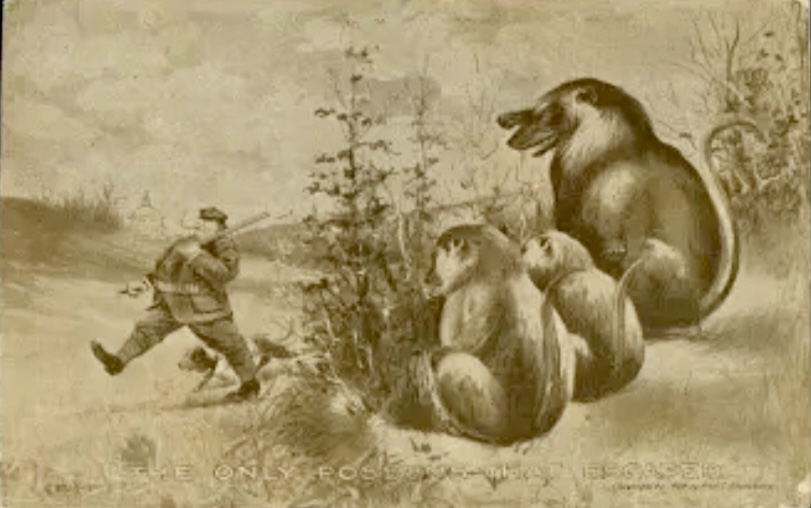
Billy Possum Postcards by Fred Loundsbery.
BILLY POSSUM‘S POSTCARD ARTISTS
The first artist to create an image of Billy Possum was Atlanta cartoonist Lewis C. Gregg. Postcard artists soon jumped on the bandwagon. Fred T. Lounsbery created a series of sepia Billy Possum postcards. “Good By Teddy” shows Billy Possum passing Teddy Bear on the road to the US Capitol. “The Only Possums that Escaped” depicts a family of possums hiding behind shrubbery as Teddy Roosevelt struts by with a gun over his shoulder and the US Capitol in the background. A third postcard has Billy Possum and “Jimmie Possum” carrying golf clubs. Jimmie Possum represented Taft’s running mate, Vice President James Sherman.


Ethel de Wees’ version of Billy Possum appealed to Taft’s fellow Yale University graduates and golf enthusiasts. Neither Lounsbery nor deWees’ possums were very appealing. Their Billy Possums are awkwardly drawn, as if neither artist had never seen an opossum. It took a comic strip artist to boost the popularity of Billy Possum postcards.


In 1909, Crichton created a series of Billy Possum postcards published by the HSV Lithographic Company in New York. They were copyrighted by L. Gulick. Unlike the other Billy Possum postcards, Arthur’s brightly colored cards appealed to children. They stood out on the racks in postcard shops.
Of all the Billy Possum postcards, Arthur Crichton’s were the most successful. As a creator of children’s comic strips, Crite was comfortable turning animals into cartoons. The bright color palette made Crichton’s Billy Possum cards immediately recognizable. When we think of Billy Possum postcards today, it’s Crite’s version that comes to mind. It wasn’t long before Crichton’s Billy Possum had an impact on children’s book illustrators.


BILLY POSSUM MERCH
Book publishers also jumped on the Billy Possum merchandising bandwagon. In 1909, James Carter Beard (1837-1913) wrote a children’s picture book titled “Billy Possum”. It was illustrated by Culmer Barnes and published by Frederick A. Stokes. A few years later, author Thornton Burgess created “Unc Billy Possum,” illustrated by Harrison Cady. There were Billy Possum games, puzzles, brass buttons, porcelain figurines and even popular songs.
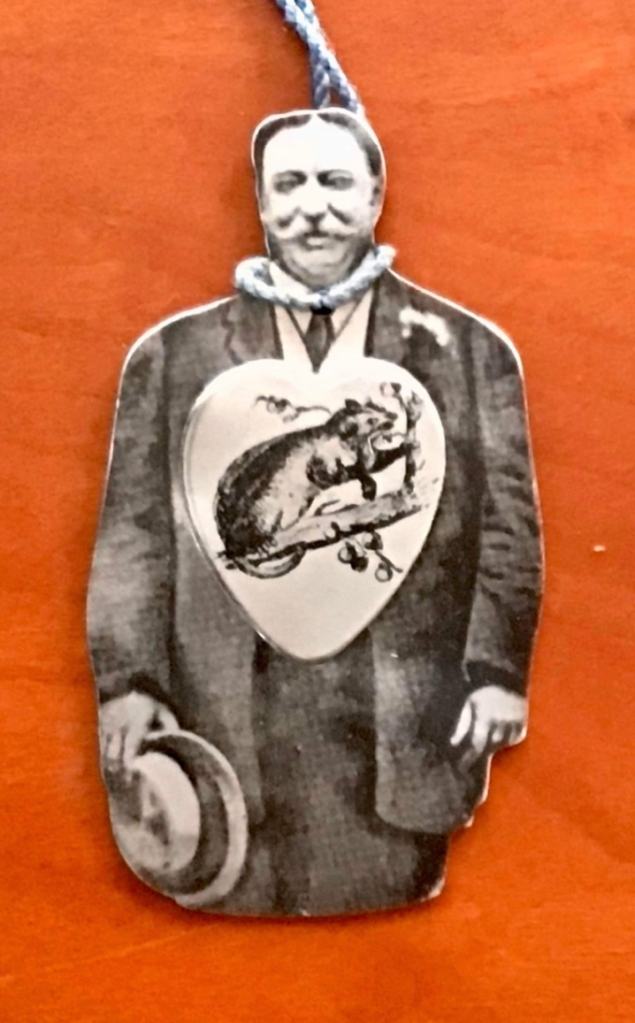

SINGING THE PRAISES OF BILLY POSSUM
Sheet music also touted Billy Possum. Hazel Elaine Rose’s lyrics to a song by Harry Hoyt suggest the manufacturers’ campaign to dethrone the teddy bear. The lyrics, of course, symbolically represent voters leaving Teddy Roosevelt behind to embrace Taft as his successor:
“Some time ago I had, you know a little teddy bear; /And with him I would always play, for no one else I’d care./ But in November nineteen eight, it seems a funny thing, /I said good-bye to Teddy, now someone else I cling./ Oh! Billy, Billy Possum, now you’re all the rage;/ You look nicer in my arms than in a wire cage./ Teddy Bear has had his day, but you, my dear are new;/ Oh! Billy, Billy Possum, it is me for you!”


BILLY POSSUM EATS TEDDY BEAR
Efforts to force a trend often backfire. The Teddy Bear evolved naturally when President Roosevelt showed empathy for a helpless animal. But Billy Possum was deliberately created out of a desire to profit from a ruthless political campaign. Advertising professionals masterminded a rivalry between Billy Possum and the Teddy Bear. Some postcards depict Billy and the adorable Teddy Bear in cruel images. For example, Fred Lounsbery’s worst card “Uncle Sam’s New Toy” shows Uncle Sam cuddling Billy Possum while the Teddy Bear lies forgotten on the floor, crushed under one of the chair legs.

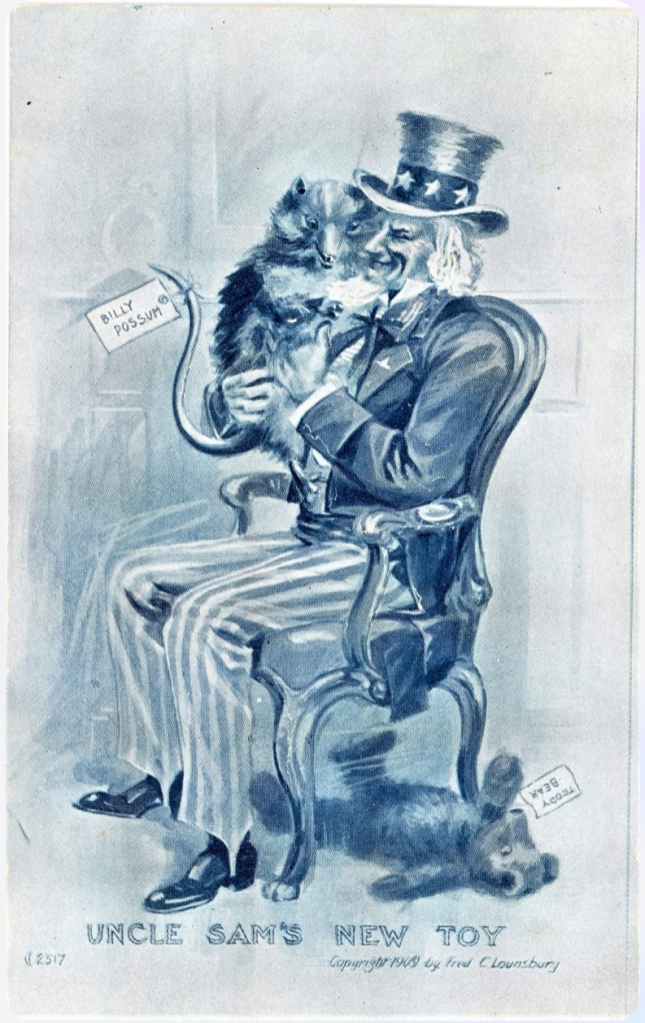
Perhaps the worst of the lot was Arthur Chrichton’s Billy Possum postcard “Good Eating Here!” It shows Billy Possum seated at a dining table, preparing to carve up a roast Teddy Bear. Poor Teddy lies on a silver platter with an apple in his mouth. Few parents could stomach buying their children a plush animal who ate Teddy Bears for dinner! As a result, by December 1910, Billy Possum’s day in the sunshine had come and gone.
ARTHUR CRICHTON: LIFE AFTER BILLY POSSUM
Despite the demise of Billy Possum, Arthur T. Crichton continued to create cartoon strips. In 1916 he switched to the animated film industry, working with Pat Sullivan, co-creator of Felix the Cat. Crichton died of stomach cancer and arteriosclerosis on June 17, 1937, at Kings County Hospital in Brooklyn NY. He was survived by his second wife, Alice, who kept their family home at 488 4thStreet in Brooklyn.
Today, Billy Possum is part of America’s political, social, and cultural history. His merchandise is scarce and highly collectible. But most articles on the subject fail to mention Arthur Crichton’s part in the tale of Billy Possum. It’s up to postcard collectors to remember them both.
Special thanks to Dick Valentinetti for providing some of the images!
Copyright 2023 Barbara A. Ross
SOURCES:
“The Story of the Teddy Bear” Theodore Roosevelt Birthplace, National Park Service. http://www.nps.gov.
Burris, Cassie. Billy Possum, http://www.ohiohistory.org.
Jay, Alex. “Ink-Slinger Profiles by Alex Jay: A.T. Crichton, Strippers Guide, March 8, 2016. http://www.strippersguide.blogspot.com
“Political Cartoonist Clifford K. Berryman and the Origin of the Teddy Bear.” Nov. 14, 2018. http://www.theodorerooseveltcenter.org
“The Last Thanksgiving Possum at the White House” Nov. 25, 2020, http://www.dannwoellerthefoodetymologist.wordpress.com
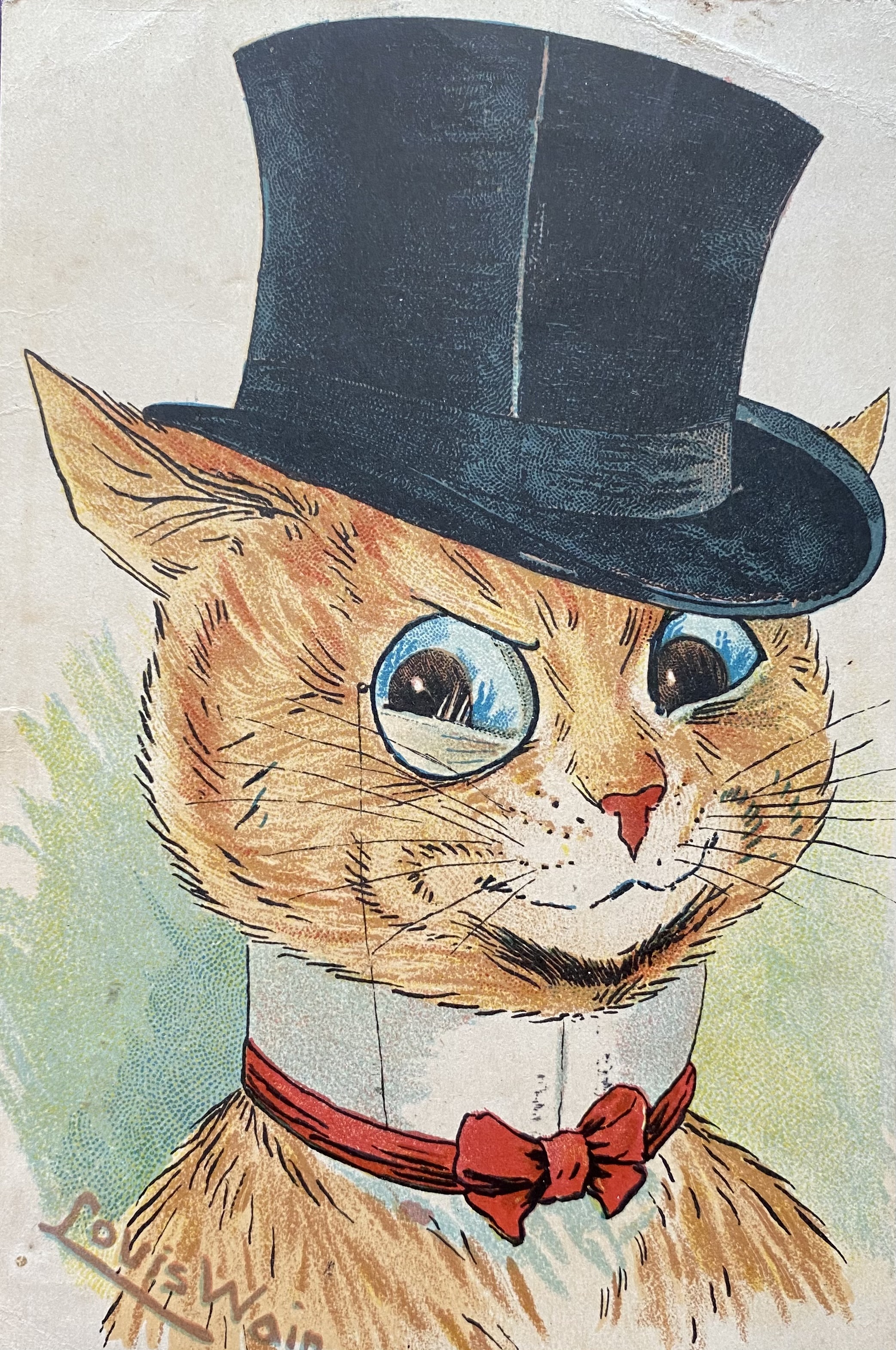
Leave a comment